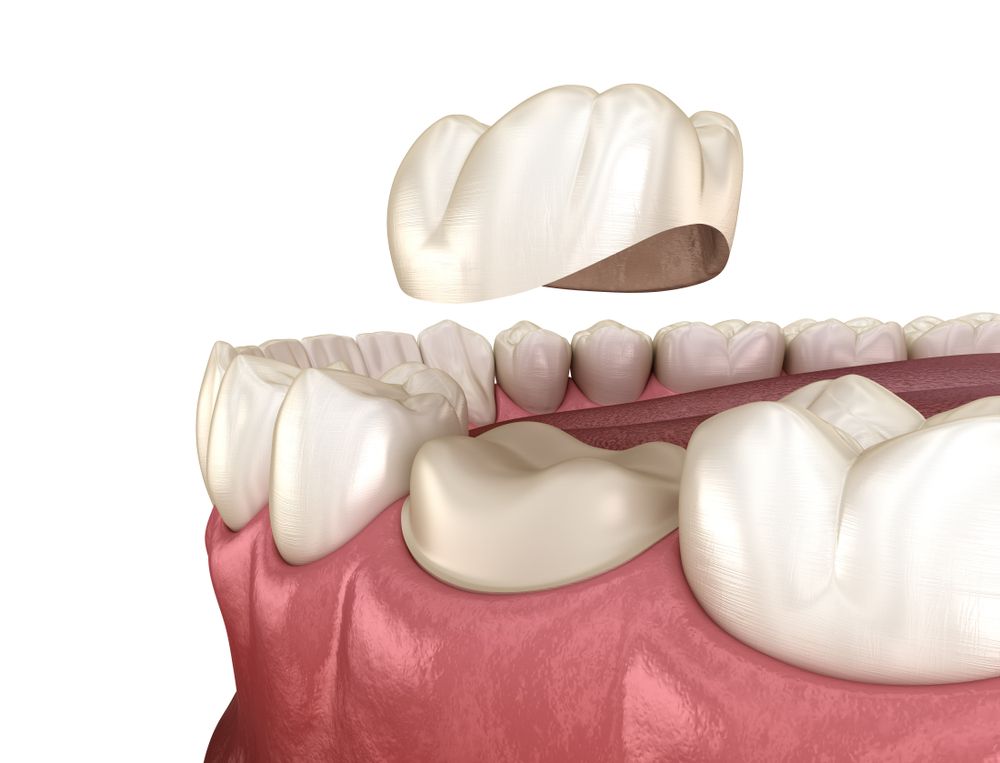
When it comes to maintaining your oral health, understanding the role of a dental crown is fundamental. Essentially, a dental crown is a type of dental restoration that completely caps or encircles a tooth or dental implant.
Why a Dental Crown May be Necessary
The reasons for needing a dental crown are multifaceted and often linked to both restorative and cosmetic dental procedures. One of the most common reasons is to provide strength and support to a tooth that has been weakened by decay or damage. When fillings are insufficient due to the size of the cavity or damage to the tooth, crowns are the next line of defense.
Another reason for a crown is to restore a tooth that is significantly worn down, either from bruxism or from acid erosion caused by foods, beverages, or conditions such as acid reflux.
Additionally, crowns can serve aesthetic purposes, improving the appearance of discolored or misshapen teeth. In cases where dental implants are used to replace missing teeth, crowns are used as the final restoration, providing a functional chewing surface and a natural-looking tooth replacement.
Signs and Symptoms that Indicate the Need for a Dental Crown
Recognizing the signs that you may require a dental crown can be crucial in preventing further complications. One of the most evident indicators is experiencing pain or sensitivity in a tooth, especially when chewing or when the tooth is exposed to hot or cold temperatures. This can signify that a tooth is damaged or decayed to the point that it needs reinforcement.
Visible signs include the presence of chips or cracks in a tooth. These imperfections may not only affect your smile aesthetically but can also lead to more serious dental issues if left unaddressed. A tooth that has become discolored or severely worn down may also be a candidate for a crown, particularly if it affects your bite or the overall harmony of your dental arch.
Swelling or tenderness around a particular tooth or in the gums can also be a clue that something is amiss. In some cases, an existing large filling may start to fail, and pieces of the tooth or filling material may come out during brushing, flossing, or eating.
How Long Can a Tooth Go Without a Crown?
The answer to how long a tooth can go without a crown varies depending on individual circumstances, such as the extent of damage and the tooth’s location in the mouth. In general, it’s advisable not to delay once symptoms are noticeable. The longer a tooth remains without a crown, the more susceptible it is to complications.
Postponing the placement of a dental crown can have serious ramifications for your dental health. One of the most immediate risks is the breaking or fracturing of the tooth, which can sometimes be irreparable. If the damage is extensive, it may necessitate a more invasive procedure, such as an extraction, followed by the need for an implant or a bridge.
Infection is another significant risk associated with waiting too long for a crown. An unprotected tooth is an open door for bacteria, which can lead to decay not just in the vulnerable tooth but also in surrounding teeth. If the decay reaches the tooth’s pulp, this could cause intense pain and require a root canal or even lead to the loss of the tooth.
Conclusion
Understanding the urgency of dental crown placement can help safeguard your oral health and prevent a range of additional complications. While the exact duration a tooth can go without a crown can depend on numerous factors, it’s clear that delaying the procedure is not advisable. Recognizing the signs that you might need a crown and acting promptly can save you from pain, extensive dental work, and additional expenses.
If you suspect you might need a dental crown, visit Allen & Washington Dental Office at our office in Pasadena, California. Protect your smile and your well-being by making an appointment as soon as possible. Call (626) 699-9770 to schedule an appointment today.




